In my prior blog ( Multi-Voice Synthesizer - Part 4 - New schematics and layouts. ) I covered the latest designs for my Multi-Voice Synthesizer project. Today, I am going to make a little Noise.
Going into this project, one of my goals was to use the Voice Module to generate musical notes and to also generate some noise. I have achieved that goal by porting and modifying my noise source from my Op-Amp-a-Palooza project ( Adding additional capabilities to my KORG volca modular synthesizer and learning about Op-Amps at the same time. ) to work with my current Voice Module.
The normal Voice Processor firmware uses a fixed timer interrupt (10 µS or 100 kHz) to update the DAC and compute the waveform value for the next interrupt. Replacing the waveform look up code with the noise processing code will allow me to convert a Voice Module into a Noise Module. The ATTiny1614 processor, in its Timer Interrupt uses a Linear Feedback Shift Register (LFSR) technique, using a 40 bit register length to develop a Pseudo Random bit sequence. Here is a logical diagram of the LFSR implementation that I utilized:
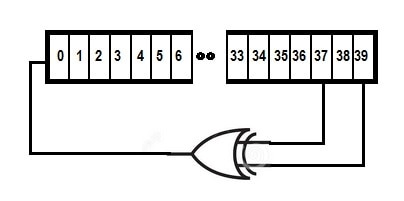
The LFSR register was made up of 5 8-bit words (declared as unsigned char) that were assigned by the compiler to registers so that they did not need to be read/stored into memory. During each Timer interrupt, the most significant 8 bits are written to the DAC output register. The LFSR was declared as follows (along with a temporary register to assist in the computations):
register unsigned char LFSR1;
register unsigned char LFSR2;
register unsigned char LFSR3;
register unsigned char LFSR4;
register unsigned char LFSR5;
register unsigned char TEMP;
Theses registers were initialized with random values during the 'setup' portion of the 'C' code:
LFSR1 = (unsigned char) rand();
LFSR2 = (unsigned char) rand();
LFSR3 = (unsigned char) rand();
LFSR4 = (unsigned char) rand();
LFSR5 = (unsigned char) rand();
TEMP = 0;
The compiler then assigned these variables to register during the compilation process. Here are the resulting assignments:
;NAME DEFINITIONS FOR GLOBAL VARIABLES ALLOCATED TO REGISTERS
.DEF _LFSR1=R3
.DEF _LFSR2=R2
.DEF _LFSR3=R5
.DEF _LFSR4=R4
.DEF _LFSR5=R7
.DEF _TEMP=R6
Here is the assembly language code that I had developed to process the LFSR function.
DAC0.DATA = LFSR5;
#asm
;Generate the feedback from bits 39,35 (NOTE! Hill uses 1,2,3,4 numbering)
clr R6 ;TEMP = 0
sbrc R7,6 ;test b39
inc R6 ;ITEMP
sbrc R7,2 ;test b35
inc R6 ;ITEMP2
ror R6 ;put bit 0 into carry
;Shift everyone over, and the carry into the register.
;Bits Hill's bits
rol R3 ;7-0 8-1
rol R2 ;15-8 16-9
rol R5 ;23-16 and so on
rol R4 ;31-17
rol R7 ;39-32 40-33
#endasm
In the future, I might want to change the interrupt rates in order to generate even higher frequencies into the noise (closer to the maximum DAC update rate of 350 kHz), but for now it looks pretty good. Here is a capture of the noise spectrum, taken at the DAC output (red) and from the Echo Circuit output (bypassed - blue). There is a DC shift and some gain variations between these two measurements, but the flat spectrum shows that we have a pretty flat, wide band noise output.
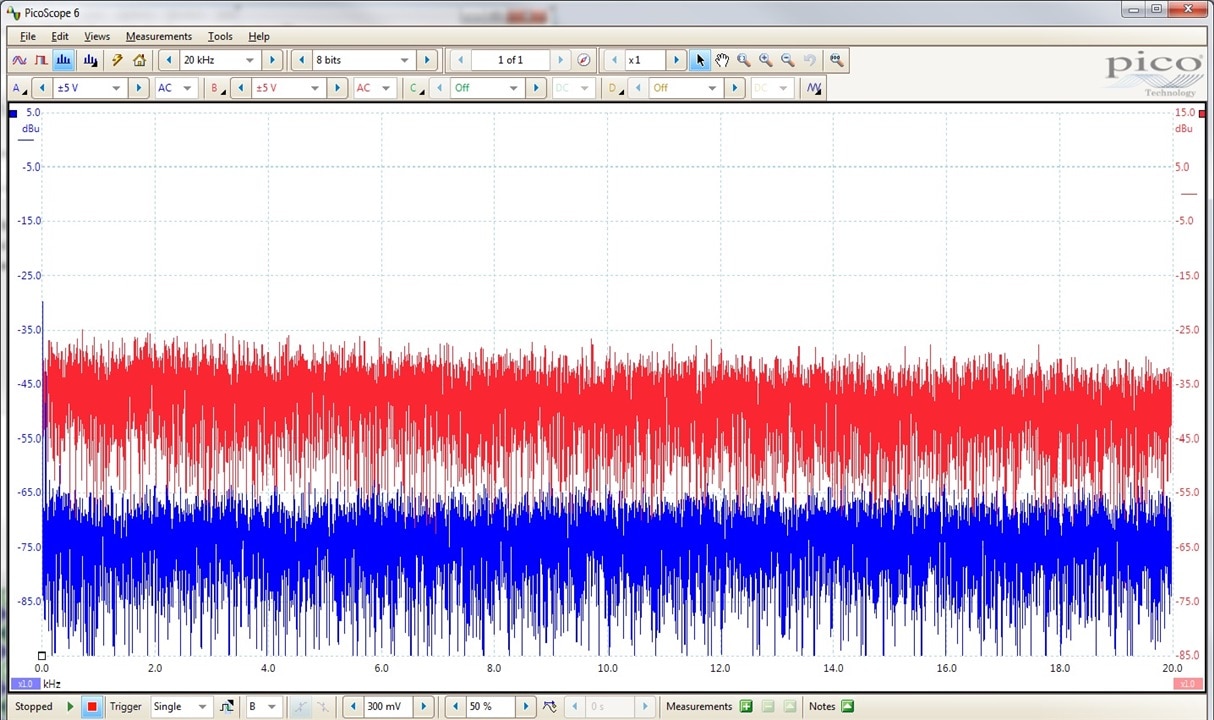
Looking deeper at the noise output, you can see the 100 kHz update rate:
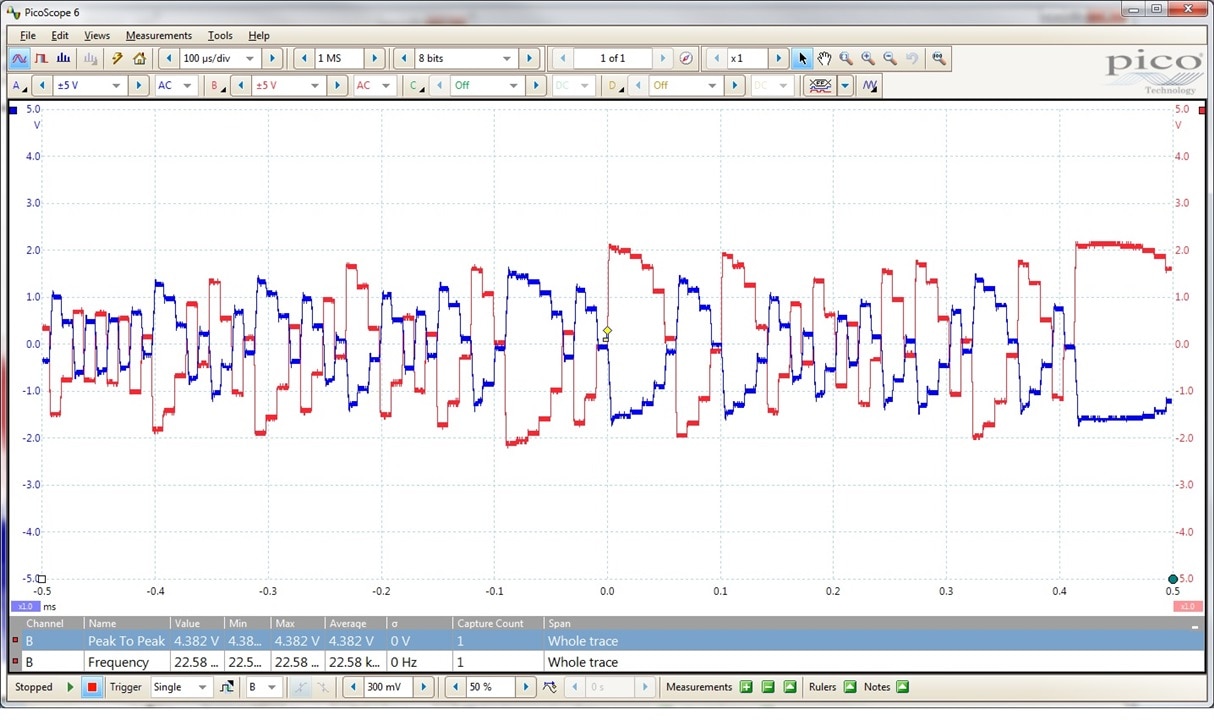
Here is a capture of the noise output, again taken at the DAC output (red) and from the Echo Circuit output (bypassed - blue). The Echo output is inverted due to the inverting summing circuit that combine the outputs from the multiple (up to 6) Voice Modules. It is interesting to see the different patterns that work through the noise waveforms, from single bit toggles to lower frequency artifacts as the upper 8-bits transition from all '1's to all '0's, one bit at a time.
As an added 'effect', the summing circuit has a gain adjustment that can be set such that the noise output saturates (clips) which tends to lower the frequency component. Here are a capture of the 'clipped' waveform and side by side spectrum of the noise (first low gain, then high gain).
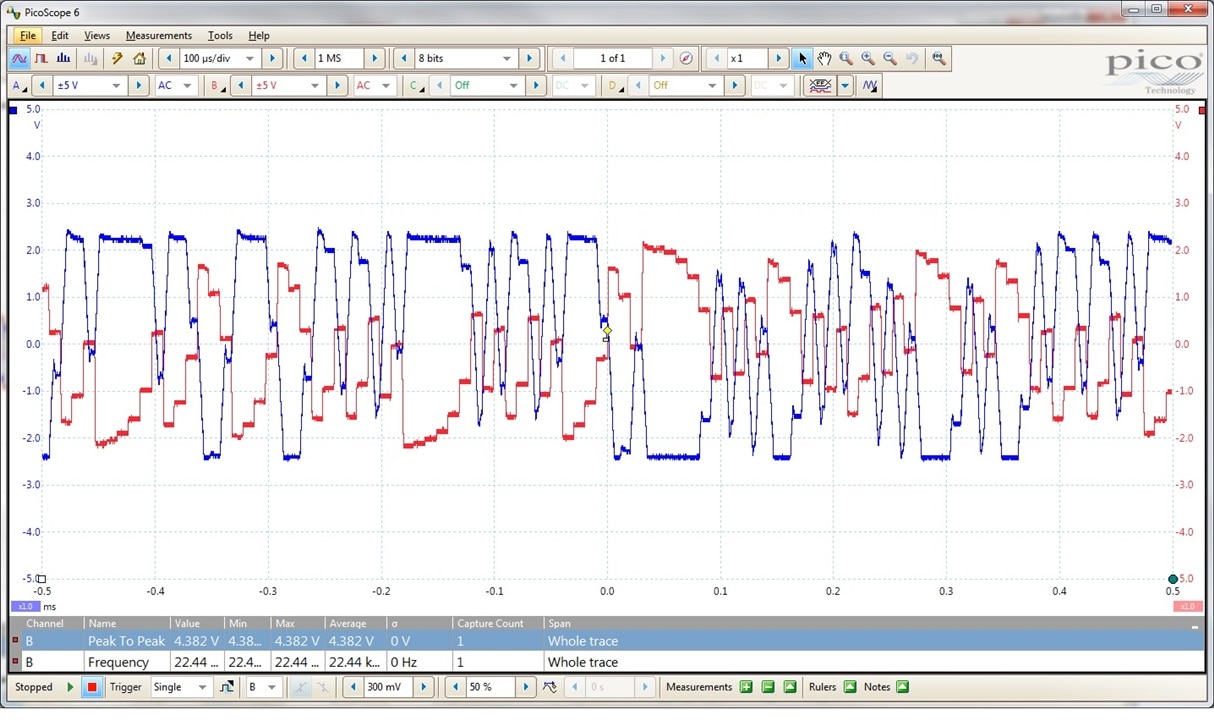
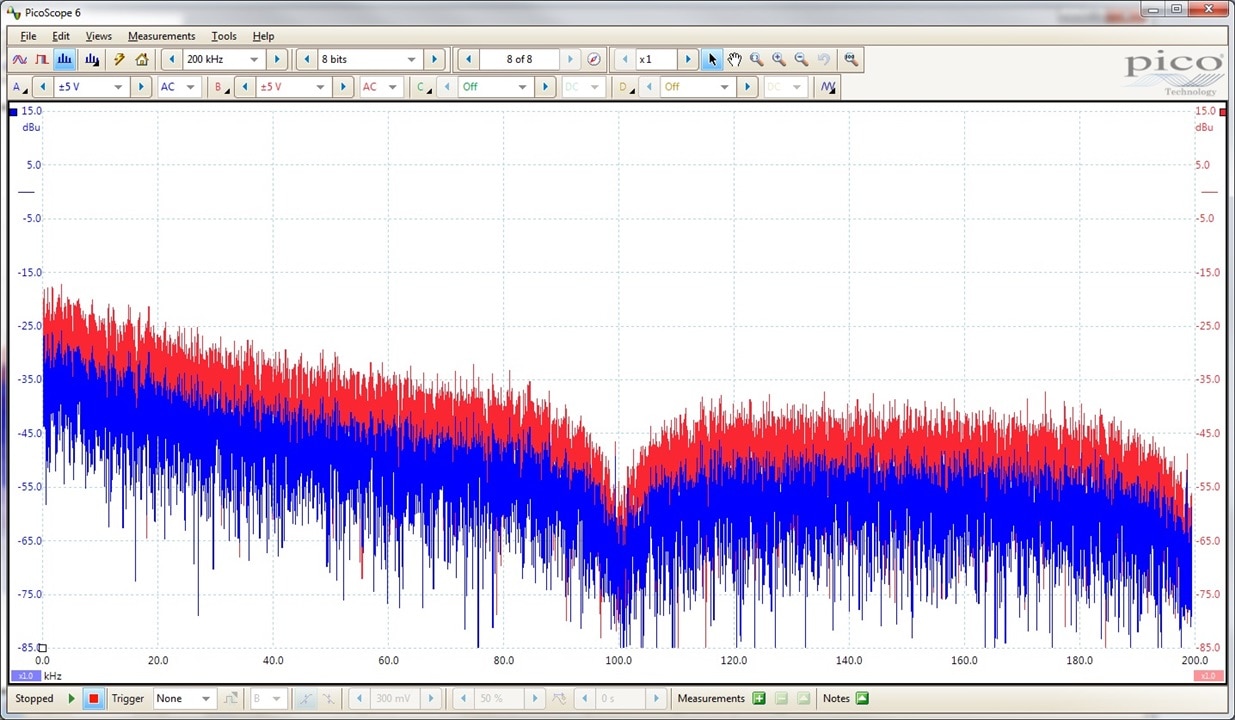
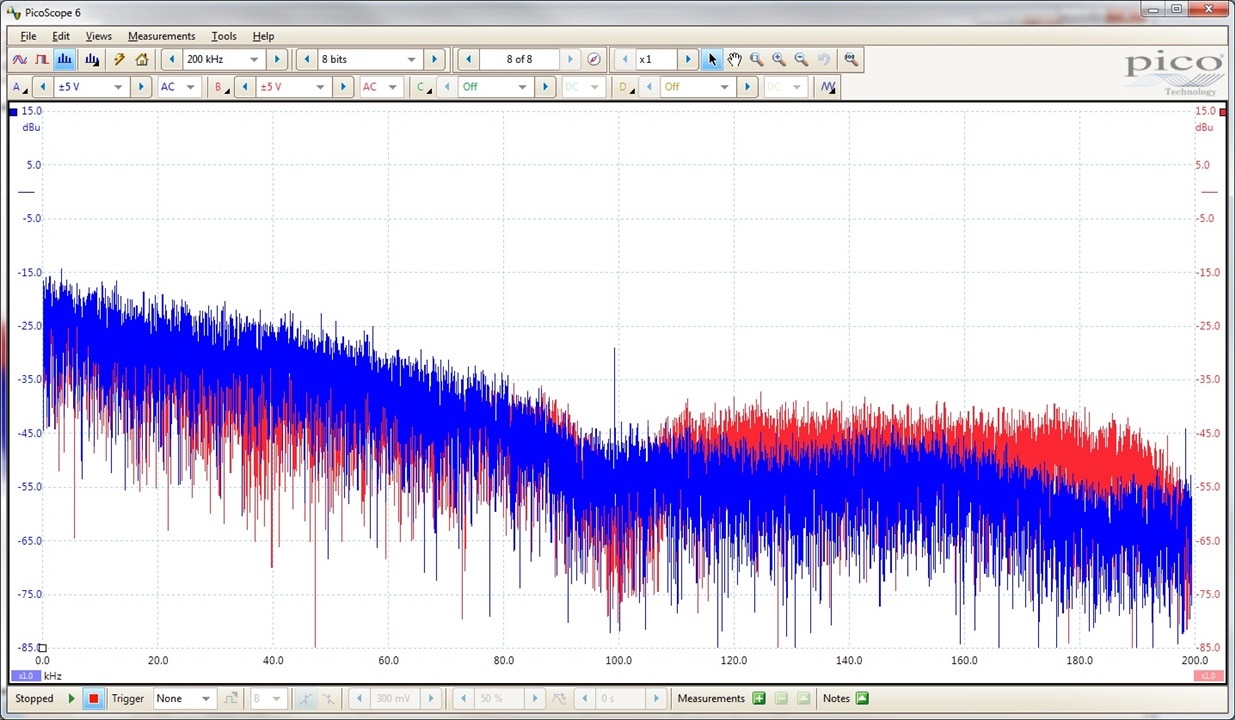
The added gain increase the overall noise below the sampling rate (100 kHz), but decrease the noise above 100 kHz.
Switch in the Echo processor, also has an effect on the Noise spectrum. The filters in both the Modulator and Demodulator of the Noise processor are attenuating the higher frequencies (above 10 kHz) resulting in a rolloff in the spectrum (down 40 dBu at 40 kHz):
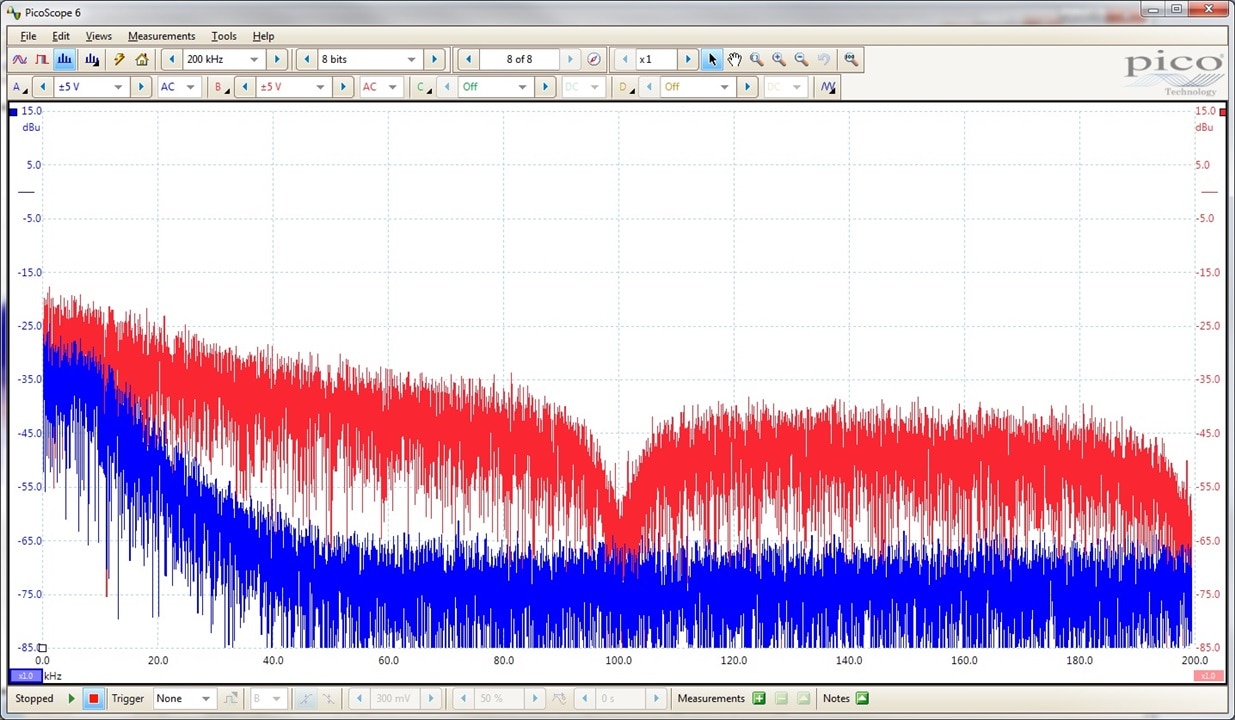
To give you an idea of the sounds of the generate a noise I created a short video of the setup while changing settings on the control panel. Warning some of the audio (speaking) gets overrun by the noise.
